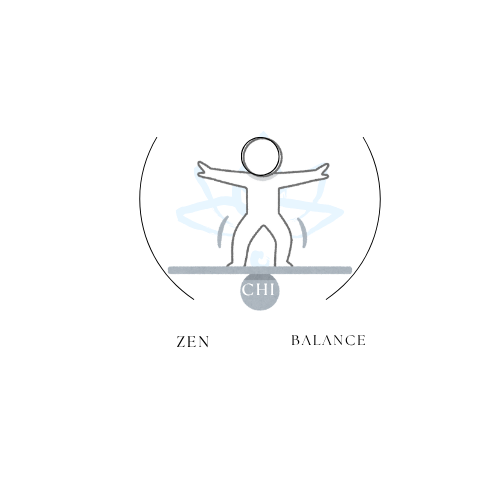
Evening rituals that improve sleep mood and next day energy
Share
Updated on: 2025-10-23
- Common mistakes when building an evening ritual
- Buyer’s checklist for evening ritual tools and comforts
- Evening ritual FAQ
- Wrap-up and final thoughts on your evening ritual
Setting a kind, realistic evening ritual can feel like giving yourself a soft landing at the end of the day. Whether you call it an evening routine, a nighttime ritual, or a wind-down routine, the aim is the same: make space to transition from activity to ease. The ideas below keep sleep hygiene simple and gentle, focusing on small, steady choices you can keep. You will find practical tips, a buyer’s checklist for helpful items, and answers to common questions so you can design an evening ritual for better sleep and a calmer mood.
Common mistakes when building an evening ritual
It is very natural to start with enthusiasm and then feel stuck. These common missteps may get in the way, and a few small adjustments can help your nighttime ritual feel more doable and kind.
- Trying to change everything at once. A long list can feel heavy at the end of the day. It may help to begin with one or two simple steps you enjoy, then add more over time.
- Setting strict rules instead of gentle rhythms. A rigid approach can feel stressful. A calm evening ritual works best when it adapts to real life and allows for choice.
- Skipping environmental cues. Lighting, sound, temperature, and clutter all send signals. A small change—like dimmer lamps or soft background sound—can make your wind-down routine easier to start.
- Relying on screens as the main activity. Many people notice that very stimulating content can make it harder to settle. It may be helpful to switch to low-stimulation options like a paper book or gentle audio.
- Choosing steps you do not enjoy. An evening ritual is more likely to last when it includes activities you look forward to, such as light stretching, journaling, or simple breathwork.
- Being inconsistent with timing. A general window—rather than a fixed minute—can create a steady rhythm without pressure. Think of it as a routine that begins around the same time most days.
- Overlooking transitions. A tiny bridge activity, like turning down lights or tidying one small area, can help the mind recognize that the day is closing.
- Forgetting personal context. Households vary. If others share your space, gentle coordination (quiet hours, shared cues, or a signal that you are winding down) can make your nighttime ritual smoother.
Buyer’s checklist for evening ritual tools and comforts
You do not need many items to create a peaceful evening. Still, a few well-chosen tools can make your routine easier to start and more pleasant to follow. This checklist offers considerations to help you choose with care and avoid clutter.
- Lighting that supports winding down. Consider warm-toned bulbs, a dimmable lamp, or candles used safely. Check brightness range, bulb type, and placement to reduce harsh glare.
- A simple timer. A small, quiet timer (physical or app-based) can help you move through steps without watching the clock. Look for a soft chime and an easy interface.
- Journal and pen. If you enjoy reflection, choose a notebook with paper you like and a pen that feels smooth. A dedicated journal tray or pouch can keep things tidy.
- Comfort textiles. A breathable robe, socks, or a light throw can signal rest. Check materials, care instructions, and size for comfortable layering.
- Scent, if you enjoy it. A diffuser or lightly scented balm can be soothing to some people. Look for clear ingredient lists and adjustable intensity. Fragrance-free options work well too.
- Tea cup or hydration bottle. If a warm or room-temperature drink is part of your routine, consider a cup with a comfortable handle or a bottle with a quiet lid.
- Analog reading or audio. A paper book, e-ink reader with low light, or gentle audio can feel less stimulating. Consider a small bookstand or headphones with soft ear cups.
- Stretch or breathwork mat. A thin, non-slip mat keeps small movements comfortable. Check texture, thickness, and storage options.
- Eye mask or blackout shade. If darkness helps you ease into rest, choose an adjustable fit and breathable fabric.
- Small storage. A bedside caddy or basket helps keep your evening ritual items in one place so the routine is easy to start.
If you prefer curated options and gentle how-to guides, you may find helpful reading on our blog at Blog, or browse calming essentials here: Collections.
Evening ritual FAQ
What should I include in an evening ritual to wind down effectively?
Many people appreciate a short sequence with three parts: soften the environment, ease the mind, and settle the body. For example, you might dim lights and clear a small surface; write a few lines or read; and then stretch gently or try calm breathing. This simple evening ritual for stress relief can be adapted to your preferences. If you enjoy audio, a quiet playlist or nature sound can add a peaceful note to your wind-down routine.
How long should an evening ritual take for best results?
There is no single ideal length. Some people feel satisfied with 10–15 minutes, while others prefer 30 minutes or more when time allows. A helpful approach is to choose a “minimum version” that fits any day—perhaps one song of stretching, a short journal entry, and lights down—and an “expanded version” for days when you have more space.
Is it okay to change my evening ritual on busy days?
Flexibility often helps a routine last. Consider your ritual as a menu rather than a script. Keep one core cue, such as dimming a lamp, and then pick one or two small steps that feel realistic. This way, your nighttime ritual stays present even when schedules shift.
Can an evening routine be tech-free without being strict?
Yes, a gentle boundary can be enough. You might place your phone on a charger in another room or switch to airplane mode at a consistent time. A simple analog replacement—like a paper book, timer, or alarm clock—can make the change feel easier and reduce the pull to scroll.
Wrap-up and final thoughts on your evening ritual
An evening ritual works best when it fits your life and feels kind. Start small, let your space support you, and give yourself room to adjust. Over time, this steady rhythm can become a familiar cue that the day is naturally winding down. If you would like to understand our approach to calm, considered routines, you may appreciate this page: About. And if questions come up as you personalize your routine, we are here to help at Contact.
A simple six-step evening ritual to try
The outline below offers one possible flow. Please tailor it to your space, schedule, and preferences.
- Step 1 — Signal the shift. Dim lights, close a few tabs or apps, and put your phone on silent or airplane mode if that feels helpful.
- Step 2 — Clear a small surface. Tidy a nightstand or desk for two minutes. The clean space can make the next steps feel easier to start.
- Step 3 — Gentle movement. Stretch your neck, shoulders, hips, and back. Keep movements slow and comfortable.
- Step 4 — Quiet reading or journaling. Read a few pages of a calm book or write a short entry: one win, one gratitude, one intention for tomorrow.
- Step 5 — Soft audio or silence. Choose a low, steady sound you like, or simply enjoy quiet if your space allows.
- Step 6 — Lights down. Reduce brightness further and prepare your space for rest. This can be your final cue that the day is complete.
As you refine your evening routine, it may be helpful to review your plan once a week. Keep what feels good, remove what feels heavy, and add one small detail you are curious to try. With time, your nighttime ritual can become a reliable, gentle part of your daily rhythm. This approach supports steady sleep hygiene without pressure, and it invites ease into the end of your day.

I'm a passionate curator at Zen Chi Balance, dedicated to spreading calm, harmony, and mindful living through faith-inspired lifestyle products. I help craft meaningful experiences for our global community of mindful shoppers.
The content provided is for informational and inspirational purposes only. It is intended to encourage personal growth, mindfulness, and balance in daily life. Zen Chi Balance does not provide medical, legal, or professional advice. For specific concerns or guidance, please consult a qualified professional. Visit us at www.zenchibalance.com for more inspiration and resources.
